Art & Exhibitions
artnet Asks: Artist, Author, and Veteran New Yorker Maira Kalman
Girls and lawns are the latest preoccupation for Kalman and writer Daniel Handler.

Girls and lawns are the latest preoccupation for Kalman and writer Daniel Handler.

Rozalia Jovanovic

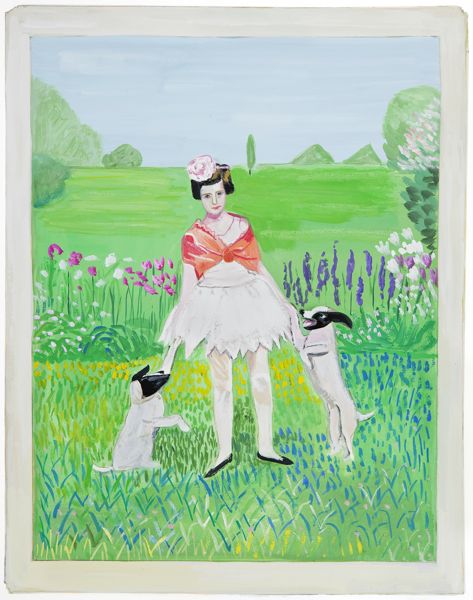
Maira Kalman, Girl with Dogs (2013).
Courtesy of Julie Saul Gallery, New York.
For her fifth solo exhibition at Julie Saul Gallery, “Girls Standing on Lawns and Other Projects,” artist and best-selling author Maira Kalman presents paintings based on a collection of vernacular photographs sourced from the archives of the Museum of Modern Art (some of which were donated from the artist’s personal collection). Kalman’s bright, masterful paintings are also the subject of a book, due out May 6, for which Kalman collaborated with writer Daniel Handler (of Lemony Snicket renown)—and which is the first in a series by MoMA. We took a moment to catch up with Kalman and are happy to say that she’s as delightfully quirky a personality as her often-whimsical paintings and illustrations would suggest. If you need further proof, the lovely Kalman will be on hand April 23 at the opening reception to sign copies of the book.
Your new book, a collaboration with writer Daniel Handler, has 40 vintage photos from the collection of the Museum of Modern Art along with original paintings you made that were inspired by the photos and text by Handler. How did the project come about?
I have always collected photos in flea markets and realized I had a large collection of girls standing on lawns. They really touched my heart. I sent the photos to Daniel, because I have often sent photos to him, and he has written some text. We took the idea to MoMA and the project expanded to their collection and the collection of Peter Cohen, who has a huge vernacular photography collection.

Did you have the full run of MoMA’s photographic archives to choose from, or a particular segment? What was it like to have that archive at your fingertips?
For that book, we kept to vernacular photography to keep the tone the same. But for the next book, we are looking at EVERYTHING they have and it is sublime.
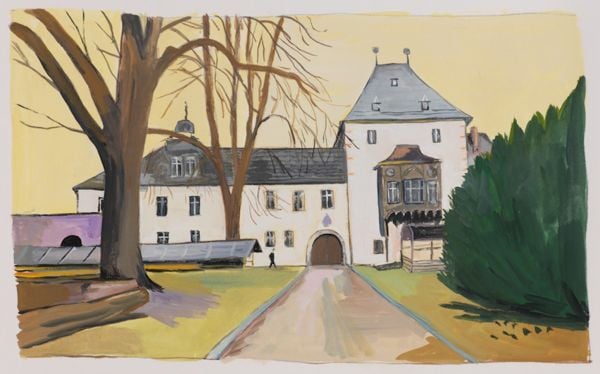
Maira Kalman, Silesian Home (2012).
Courtesy of Julie Saul Gallery, New York.
How did you arrive at the subject of girls standing on lawns?
We had a kind of standard family pose for photographs, and I always thought it was funny: in fourth position with arms by the side but hands horizontal, like we were going to take flight, a kind of ballet pride or something like that. It is such a universal subject and moment and so intimate at the same time. There are so many gentle stories and non-stories evoked.
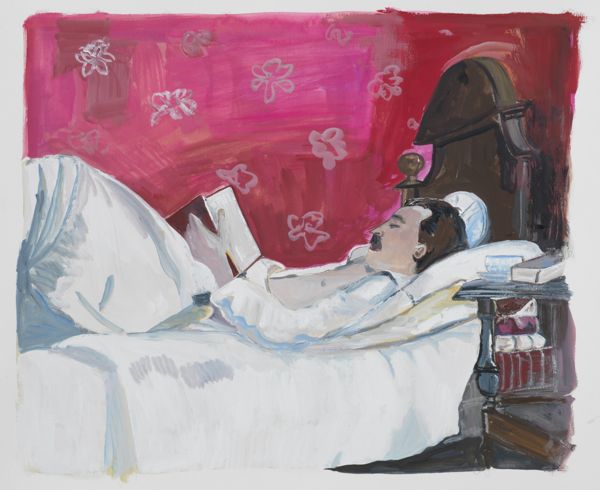
Maira Kalman, Robert Walser (2012).
Courtesy of Julie Saul Gallery, New York.
Do you eat breakfast? If so, what do you like to eat?
I am addicted to pomegranate seeds, with sheep’s milk yogurt; and, of course, a cup of coffee; and, of course, reading the obituaries.

Maira Kalman, Arbus Girls Standing on Lawns (2013).
Courtesy of Julie Saul Gallery, New York.
You’ve worked with Daniel Handler before on the national bestseller “Why We Broke Up.” How do you work together?
Because he is so brilliant, it is rather easy. We got together and looked at hundreds of photos and artifacts that I collect and chose things that I would love to paint. with additions as the book went along. But it began with the objects that resonate.
What is your work schedule like? How often do you sit down to paint or draw? Is it something you do on a regular schedule each day or mostly when you feel inspired?
As I often say, the deadline is a beautiful thing. I don’t go to the studio every day. There are days to wander about and kind of float through time. But then I have rigorous getting-to-work-in-my-studio periods. And it can go on for weeks and months. And then I run away.
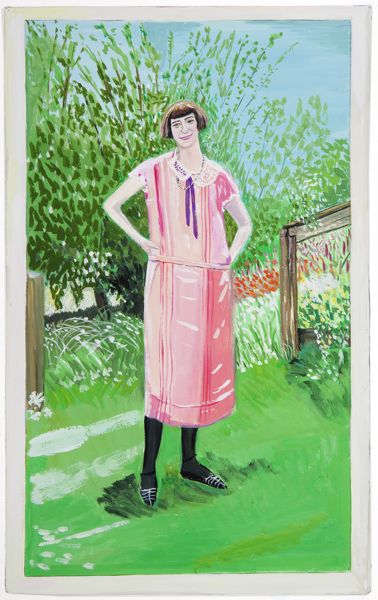
Maira Kalman, Girl in Pink Dress (2013).
Courtesy of Julie Saul Gallery, New York.
If you could live in any decade, which decade would it be and why?
I am going to stick with now. I like now.
In books that you write and illustrate, you always manage to find a personal angle within the stories that you tell. Have any characters from your life made it into this new series of paintings?
My family is afraid to talk in front of me because EVERYTHING that happens might find its way into a story. But I don’t want to be mean or embarrass anyone, so it is more lyrical and absurd.
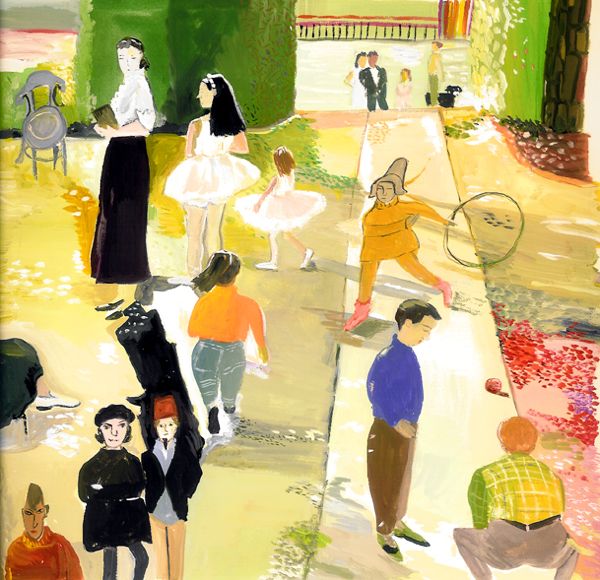
Maira Kalman, Sunny Day at the Park (2007).
Courtesy of Julie Saul Gallery, New York.
Your books and narratives are very object-oriented. Whether you’re telling the story of Abraham Lincoln or narrating a year in your life, it’s grounded in things. When you’re illustrating someone else’s writing, how do you decide which things to illustrate?
The guiding principle is what makes me gasp with delight. Some recognition that the object and the story and my interests all come together in a perfect sparkly moment.
I heard you used to be (or perhaps still are?) a member of something called the Rubber Band Society. What is that? What happens at meetings?
I have a love of rubber bands and oddly enough, found other people who had a similar feeling. So we got together to talk about things related to rubber bands and we had a magazine, but mostly we got together just to hang out. We disbanded a long time ago.
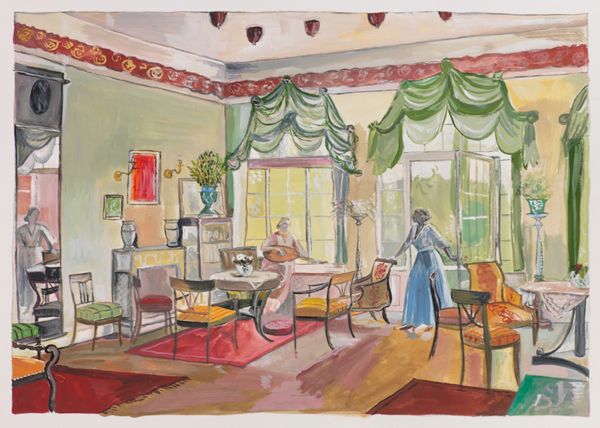
Maira Kalman, Two Kind Sisters in a Parlor (2012).
Courtesy of Julie Saul Gallery, New York.
You grew up in Riverdale, in the Bronx, as did I. I think it was in “The Principles of Uncertainty” that you mention Mother’s Bake Shop (which was the go-to bakery of my mother’s when I was growing up). What was a favorite dessert you would have there? Do you have a favorite dessert place today (anywhere in New York)?
The mocha cream cake was our go to dessert. But we also liked the cinnamon sticky buns. Now I am in love with the mille-feuille cake at Lady M. The rugelach at Breads Bakery on 16th are seriously great.

Maira Kalman, Man with Pug (2014).
Courtesy of Julie Saul Gallery, New York.
If you weren’t an artist, what would you be doing?
Walking around the world and ironing at convents, which is what I hope to do some day.